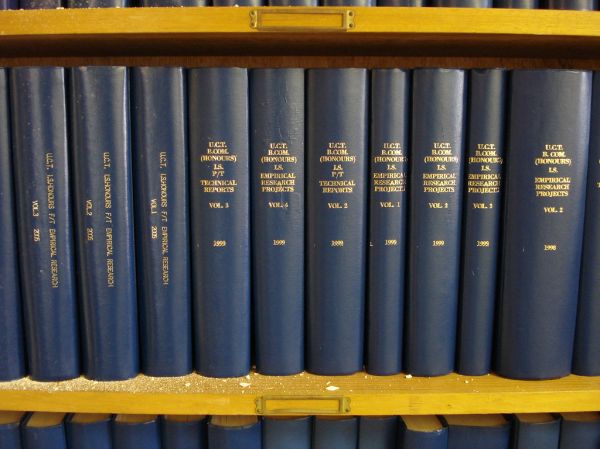Books are not only a source of knowledge and entertainment, but they also hold sentimental value for many individuals. However, over time, books can accumulate dust and grime that can damage their pages and covers. As a professional book cleaner, it is essential to know how to deep clean and dust books properly.
The process of cleaning and dusting books involves several steps that require attention to detail and care. It is important to use the right tools and techniques to avoid damaging the book’s spine, pages or cover. This article aims to provide readers with valuable insights into how to deep clean and dust books effectively. By following these guidelines, you will be able to restore your books’ pristine condition while preserving their sentimental value for many years to come.
Understanding The Importance Of Proper Book Maintenance
Books are more than just mere objects; they are gateways to knowledge, windows to the world, and treasures that hold stories, ideas, and emotions. However, as much as we cherish them, books are also vulnerable to wear and tear. Without proper maintenance, books can deteriorate rapidly and lose their value over time. Therefore, it is essential to understand the importance of book preservation and the benefits of regular book cleaning.
Proper book maintenance involves various techniques such as dusting, repairing damages, storing in ideal conditions and handling with care. Neglecting these practices can lead to irreversible damage like yellow pages, mold growth or insect infestation. Regular cleaning not only ensures that your books remain aesthetically pleasing but also helps preserve their structural integrity. It prevents dirt accumulation that can cause abrasions on book covers or pages and prolongs the lifespan of your books.
The benefits of regular book cleaning go beyond aesthetic appeal; it also promotes hygiene by reducing allergens like dust mites that may be harmful to health. Additionally, it creates an opportunity for you to assess the condition of your books regularly and take necessary steps towards preserving them. By understanding how important proper maintenance is for your books’ longevity and usefulness, you will be able to enjoy your collection for years to come.
Assessing The Condition Of Your Books
Proper book maintenance is crucial to ensure that your books remain in good condition for years to come. Assessing the condition of your books is an essential step before proceeding with any cleaning and dusting tasks. Identifying the cleaning needs of each book will help you determine how to deep clean and dust them effectively.
When assessing book condition, it’s essential to take note of any visible signs of wear and tear, such as creased pages, torn covers, or binding damage. Also, check for any stains or marks on the pages caused by water, coffee spills, or food residues. These factors will determine the type of cleaning technique you need to apply to each book.
After assessing book condition and identifying cleaning needs, you can start gathering the necessary supplies for cleaning. The supplies required depend on the type of books you have and their specific cleaning needs. For instance, if a book has leather binding, you might need a soft-bristled brush and a specialized leather cleaner. If a book has mold growth or insect infestation, it’s best to contact professional cleaners who can handle these issues appropriately.
Gathering The Necessary Supplies For Cleaning
To ensure that your books are thoroughly cleaned and dust-free, you must first gather the necessary supplies. Not only does this make the process more efficient, but it also ensures that the cleaning is done properly. The following items are essential in any book cleaning kit:
- Soft-bristled brush – A soft-bristled brush or a feather duster can be used to remove loose dirt and debris from the pages of the book.
- Microfiber cloth – A microfiber cloth is an excellent choice for wiping down book covers and removing stubborn stains.
- Cleaning solution – It’s important to use eco-friendly cleaning solutions when maintaining books. Some DIY solutions include vinegar and water mixture or dish soap mixed with warm water.
When looking for where to buy eco-friendly supplies for cleaning, there are various options available. You can find them at local stores or online retailers. It’s recommended to choose environmentally friendly products as they not only protect your books but also help protect our planet.
DIY cleaning solutions for book maintenance are also popular among book lovers. They’re easy to make and cost-effective too. Before using any DIY solution, test it on a small area of the book to ensure that it doesn’t damage it in any way. When making a DIY solution, always follow instructions carefully.
Once you’ve gathered all the necessary supplies for cleaning your books, it’s time to choose the right cleaning method. Different books require different methods of cleaning depending on their condition, age, and fragility. In the next section, we’ll discuss how to determine which method is best for your books so that they can stay in pristine condition for years to come.
Choosing The Right Cleaning Method
When it comes to deep cleaning and dusting books, it is crucial to choose the right cleaning method. There are various options available, ranging from eco-friendly DIY techniques to professional cleaning services. Choosing the appropriate method is essential for ensuring that your books remain in pristine condition.
One of the primary considerations when selecting a cleaning method is whether you want to use eco-friendly methods or not. Many people are becoming more conscious of their impact on the environment, and using non-toxic and sustainable materials has become increasingly popular. If you prefer this approach, there are several eco-friendly DIY methods available that can effectively clean your books without causing any harm to either the books or the environment.
Alternatively, if you have valuable or antique books that require special attention, it may be best to seek out professional cleaning services. These services have specialized equipment and expertise that can ensure your books receive proper care and attention while being cleaned. However, it is important to note that professional cleaning can be costly compared to DIY methods. Therefore, you must weigh the benefits against the cost before making a decision.
| Pros | Cons |
|---|---|
| Eco-Friendly DIY Methods | May not be as effective as professional cleaning |
| Professional Cleaning Services | Can be expensive |
In summary, choosing the right cleaning method for your books is essential for maintaining their quality and longevity. Whether you opt for an eco-friendly DIY technique or decide to enlist professional help will depend on several factors such as your budget and specific book requirements. In our next section, we will discuss how to dust the cover and pages of your beloved books without damaging them further.
Dusting The Cover And Pages
- The use of a soft brush is a useful tool for dusting the cover and pages of a book, as it is gentle and effective in removing dust and dirt.
- Vacuum cleaning is an option for removing dust from books, though care must be taken to ensure the suction is not too strong as this could damage the cover or pages.
- Microfiber cloths are great for removing dust from many surfaces, including books.
- For best results when using a microfiber cloth, it should be slightly dampened and then used to gently dust the cover and pages.
- As with any dusting method, it is important to ensure the book is supported securely and the dusting is done from the top down.
- For those books with particularly stubborn dust particles, a combination of soft brushing and microfiber cloths is the most effective way of removal.
Soft Brush
As book lovers, we want our books to last and remain in pristine condition. However, dust and dirt can accumulate on the cover and pages over time, making it necessary to clean them regularly. To prevent damage while cleaning your books, consider using a soft brush.
Using a soft brush is an effective way of removing dust from your books without causing any harm. A soft-bristled paintbrush or makeup brush can be used to gently sweep away any dirt or debris that has accumulated on the cover or pages. When brushing the cover, start from the top and work your way down in a gentle motion. For the pages, hold the book firmly closed and brush the edges gently to remove any dirt that may have settled there.
Preventing damage is crucial when deep cleaning and dusting your books. Using a hard-bristled brush or applying too much pressure can cause scratches or even tear delicate pages. Therefore, take caution when selecting a brush for cleaning your books and ensure that it is soft enough not to cause any damage. By using a soft brush, you can effectively maintain the condition of your books for years to come.
Vacuum Cleaner
As a professional book cleaner, it is crucial to keep books in pristine condition. One effective way of maintaining their cleanliness is by using a vacuum cleaner. While brushing is an excellent method for removing dust and debris from the cover and pages, vacuuming can reach deeper into the book’s spine and remove particles that may not be visible to the naked eye.
When using a vacuum cleaner on your books, there are essential tips to keep in mind. First, ensure that the vacuum has adjustable suction power levels to avoid damaging delicate pages. Additionally, use a soft brush attachment or cover the hose with a mesh material to prevent any scratching on the surface. It is also crucial to avoid direct contact between the nozzle and book while cleaning.
It is recommended to deep clean your books with a vacuum cleaner every six months or as needed, depending on their usage and location. By incorporating this cleaning technique into your regular maintenance routine, you can help extend the life of your books for years to come.
Microfiber Cloth
As a professional book cleaner, it is essential to keep books in pristine condition. One aspect of maintaining their cleanliness is dusting the cover and pages regularly. While brushing and vacuuming are effective methods, there is an alternative that can be used for daily maintenance – microfiber cloths.
Microfiber cloths are beneficial for cleaning books as they are gentle on delicate surfaces and do not leave any residue or scratches. They are also highly absorbent, making them ideal for removing fingerprints, smudges, and other small marks from book covers and pages. Moreover, microfiber cloths have a long lifespan and can be washed and reused multiple times.
Using a microfiber cloth is simple and easy. Start by gently wiping the cover from top to bottom before moving on to the pages one by one. Ensure that you fold the cloth frequently to avoid spreading dirt or dust around. This process should be repeated regularly to maintain the cleanliness of your books.
By incorporating microfiber cloths into your regular cleaning routine, you can help extend the life of your books while keeping them in excellent condition. The benefits of this method include its affordability, convenience, effectiveness, and eco-friendliness compared to other alternatives like using paper towels or tissues. In conclusion, by taking care of your books with proper cleaning techniques like using microfiber cloths, you can ensure that they will be enjoyed for years to come.
Cleaning Leather And Hardcover Books
When it comes to cleaning books, different materials require specific cleaning techniques. For leather and hardcover books, a deep clean is necessary to remove dust and dirt that accumulate over time. The first step in cleaning these types of books is to remove them from the bookshelf and place them on a flat surface.
To begin the cleaning process, use a soft-bristled brush or microfiber cloth to gently remove any dust or debris from the covers and spine of the book. Next, use a slightly damp cloth to wipe down the covers and spine, being careful not to get any water on the pages. For leather books, it’s essential to use a specialized cleaner that won’t damage or discolor the leather.
When it comes to paperback books, gentle cleaning techniques are also necessary. To avoid damaging the pages, don’t use water or liquid cleaners directly on the book. Instead, start by removing them from the shelf and dusting them off with a soft-bristled brush or microfiber cloth. You can also use compressed air to blow out any debris that may be caught in between pages.
Markdown list:
- Use a soft-bristled brush or microfiber cloth for dust removal
- Wipe down covers with slightly damp cloth
- Use specialized cleaner for leather books
- Avoid using water or liquid cleaners directly on paperbacks
Next up: Removing Stains and Spills
Transition: With these techniques for deep cleaning your books covered, now we’ll move onto how to remove stains and spills that may have accumulated over time.
Removing Stains And Spills
After spending countless hours cleaning leather and hardcover books, it’s time to turn our attention towards the next step – deep cleaning and dusting. This process not only enhances the aesthetic appeal of your books but also prevents any possible health hazards that may arise due to dust accumulation. So, let’s grab our cleaning supplies and get started!
Firstly, remove all the books from their shelves and place them on a clean surface. Use a soft-bristled brush or vacuum cleaner to remove any loose dirt or debris from the covers and pages. Be gentle while using the brush to avoid any damage to the book’s surface.
Secondly, removing tough stains can be a daunting task for many book enthusiasts. However, with patience and proper technique, it is possible to restore your beloved books back to their former glory! One effective method is using a mixture of warm water and mild detergent. Dip a cloth into this solution and gently rub it over the affected area until the stain disappears. Always remember to use minimal water while cleaning as excess moisture can cause irreparable damage.
Lastly, prevention is better than cure! To prevent future spills, always keep drinks away from your books. Additionally, you can cover your books with protective plastic covers or store them in sealed containers when not in use. Taking these simple steps will ensure that your books remain in pristine condition for years to come.
Now that we’ve covered deep cleaning and dusting let’s move on to an equally important aspect of book maintenance – cleaning the spine!
Cleaning The Spine
When it comes to deep cleaning and dusting books, the spine is an essential component that requires careful attention. The spine of a book is the area where pages are bound together, and it is often exposed to dust and dirt buildup over time. To clean the spine effectively, start by removing all books from the shelf and placing them on a clean surface.
To clean the spine, use a soft-bristled brush or cloth to gently remove any loose dirt or debris. Avoid using water or cleaning solutions directly on the spine, as this can cause damage to the binding. Instead, dampen a cloth with water or a mild cleaning solution and use it to wipe down the surrounding areas of the bookshelf.
In addition to cleaning the spine of each book, take some time to organize your book collection while you have them off the shelf. This will help prevent future dust buildup and make it easier to keep your shelves clean in the long run. Consider sorting books by topic or author, or alphabetically by title for easy reference. With a little bit of effort, you can maintain a clean and organized book collection for years to come.
Transitioning into dealing with mold and mildew: In some cases, old books may be susceptible to mold or mildew growth. If you notice signs of mold or mildew on your books’ spines or pages, it is important to address this issue promptly before it spreads.
Dealing With Mold And Mildew
When it comes to books, mold and mildew can be a serious problem. These fungal growths thrive in warm, damp environments, such as basements or poorly ventilated rooms. If left unchecked, they can cause serious damage to your books, including warping pages and even causing the bindings to fall apart. Fortunately, there are steps you can take to prevent mold from taking hold in the first place.
The most important step in preventing mold is to keep your books dry. This means storing them in a cool, dry place with good ventilation. Avoid storing them in damp areas like basements or attics, and make sure they are not exposed to direct sunlight or high humidity levels. You should also avoid stacking books too tightly together on shelves, as this can restrict air flow and create an environment that is ripe for mold growth.
If you do notice mold or mildew on your books, it’s important to act quickly before the problem gets worse. While there are many DIY methods for removing mold from books (such as using vinegar or hydrogen peroxide), these methods can be risky and may cause further damage if not done correctly. It’s always best to consult with a professional book cleaner who has experience dealing with mold and knows how to safely remove it without damaging your valuable collection.
Transition: Now that we have covered how to prevent and remove mold from your books, let’s move on to another important aspect of book cleaning: handling fragile or antique books.
Handling Fragile Or Antique Books
Preserving the value and restoring the appearance of antique books is crucial to any book collector. To ensure their longevity, it’s essential to handle them with care. One of the most important aspects of caring for antique books is cleaning them without causing damage. When it comes to delicate book pages, gentle cleaning techniques are vital.
To clean dusty or dirty antique books, start by using a soft-bristled brush to remove any loose dirt or debris from the cover and spine. For the pages, use a soft cloth or a natural-bristle brush. Avoid using water-based cleaners or solvents that can damage the paper fibers. Instead, consider using a dry-cleaning sponge or a piece of white bread to gently absorb any dirt or grime.
It’s also important to store antique books correctly to prevent further damage. Always store them in a cool, dry place away from direct sunlight and moisture. Use acid-free paper and archival-quality boxes to protect them from dust and other environmental factors that can cause deterioration over time. By following these tips for antique book care, you can preserve their value and restore their appearance for generations to come. In the subsequent section, we will discuss how to store and display your books properly without causing any harm to them.
Storing And Displaying Your Books
The proper storage and display of your books can be a delightful way to showcase your reading interests. One important aspect of bookshelf organization is to ensure that your books are not overcrowded, as this can cause damage to the spines. Consider investing in additional bookshelves or using creative book display ideas such as stacking them horizontally or placing them on floating shelves.
When organizing your books, it is also important to keep in mind the environmental conditions in which they will be stored. Avoid exposing them to direct sunlight, high humidity, or extreme temperature changes. Additionally, make sure that the shelves are sturdy enough to support the weight of your collection.
Creative book display ideas can also add a personal touch to your home library. Try grouping books by color or subject matter for an aesthetically pleasing display. You may also want to incorporate decorative items such as plants or framed artwork to add visual interest. By taking the time to properly store and display your books, you can create a cozy and inviting space for both yourself and guests to enjoy.
To prevent future damage and maintain the longevity of your collection, it is important to implement prevention techniques such as regular dusting and cleaning. In the next section, we will discuss tips for keeping your books clean and free from dust buildup.
Prevention Techniques To Avoid Future Damage
After storing and displaying your books properly, it is important to deep clean and dust them periodically to prevent damage. Dust accumulation can cause discoloration, deterioration, and even mold growth on the pages of your beloved books. Therefore, it is essential to use proper cleaning techniques that will not harm the book’s materials.
To start with, avoid using water or any liquid cleaner as they can cause damage to the paper and ink. Instead, try using a soft-bristled brush or vacuum cleaner with a brush attachment to gently remove dust from the spine, cover, and pages of the book. Make sure to hold the book tightly closed while cleaning to prevent any loose pages from coming out.
Another effective way to remove dust is by using an eraser or a piece of bread. Gently rub either material on the surface of the book to lift off dirt particles. However, make sure not to press too hard as this could damage the paper or ink. Additionally, always wash your hands before handling books as oils from your skin can transfer onto the pages and cause stains over time.
Preventing damage:
- Store books in a cool and dry environment away from direct sunlight
- Use bookends or shelves that support their weight evenly
- Handle books with clean hands and avoid eating or drinking near them
- Keep children’s sticky fingers away from cherished volumes
By following these dusting techniques and prevention methods, you can ensure that your books remain in pristine condition for years to come. In our next section, we will discuss common mistakes you should avoid when cleaning your books for optimal maintenance.
Common Mistakes To Avoid When Cleaning Books
When it comes to cleaning books, there are some common mistakes that people make. One of the biggest mistakes is rushing through the process. Taking your time and being thorough is crucial when it comes to cleaning books. Rushing can lead to missed spots or even damage to the book itself.
Another mistake is using harsh chemicals on your books. Chemicals such as bleach or ammonia can cause irreparable damage to your books’ pages and covers. It’s important to use gentle cleaners that won’t harm the book in any way. Always read labels carefully before applying any cleaner, and test a small area first.
To prevent these mistakes from happening, proper storage and regular maintenance are key. Keeping your books in a clean, dry place will help prevent dust buildup and other debris from accumulating on the pages. Additionally, regularly wiping down the covers with a soft cloth can help keep them looking their best.
In order to ensure that your books are properly cared for, it may be best to consult a professional book cleaner. They have the expertise and knowledge necessary to clean your books safely and effectively without causing any harm or damage. By following these preventive measures and avoiding common mistakes, you can keep your beloved books looking their best for years to come.
Consulting A Professional Book Cleaner
To ensure that your books are deep cleaned and dusted to the highest standard, it is highly recommended to consult a professional book cleaner. These professionals have the knowledge and expertise to clean various types of books and remove dirt, grime, and other contaminants effectively. Professional book cleaners can also restore books that have been damaged by water or mold and prevent further deterioration.
One of the benefits of book cleaning services is the quality of work that they provide. Professionals use specialized equipment and materials to clean books thoroughly without causing any damage. They also offer customized cleaning methods based on the type of book, ensuring that each one is treated with care. Additionally, some professional book cleaners offer services such as binding repair or replacement, which can extend the lifespan of your books.
While DIY book cleaning may seem like a cost-effective option, it is important to consider the potential risks involved. Using improper cleaning techniques or materials can damage your books irreversibly. Moreover, if you do not have experience in book restoration, attempting it yourself can lead to further damage or loss of value for rare or antique books. In comparison, professional book cleaning services may be more expensive upfront but can save you money in the long run by preventing costly repairs or replacement.
In considering how best to maintain your book collection, consulting a professional book cleaner should be at the top of your list. With their expertise and equipment, they can provide high-quality deep cleaning and restoration services that protect your investment in valuable books. However, there are still steps you can take on your own for daily maintenance that will help keep your books in excellent condition for years to come.
Final Tips For Maintaining Your Book Collection
Consulting a professional book cleaner can be a great option for those who want to deep clean and dust their books. However, if you prefer to do it yourself, here are some tips that can help you maintain your book collection. One of the first things to consider is the environment in which your books are kept. Make sure that they are not exposed to direct sunlight or heat sources as this can cause damage over time.
Another important factor to keep in mind is the best way to organize your books. Sorting them by genre, author, or publication date can make it easier to find what you’re looking for and also keep them in good condition. Additionally, using bookends or shelves with adjustable dividers can prevent them from leaning over and getting damaged.
When it comes to cleaning your books, there are several techniques that you can use. One common method is to use a soft-bristled brush or microfiber cloth to gently remove dust from the covers and pages. If you have more stubborn dirt or stains, using a mild solution of water and vinegar on a cloth can be effective.
Tips for organizing:
- Sort books by genre, author, or publication date
- Use bookends or shelves with adjustable dividers
- Keep a list of your favorite authors or series
Best lighting for book display:
- Avoid direct sunlight or heat sources
- Use warm-toned LED bulbs
- Install adjustable dimmer switches for optimal lighting
Maintaining your book collection doesn’t have to be difficult. By following these tips and incorporating them into your routine, you can keep your books looking beautiful for years to come. Remember that taking care of your books is not only beneficial for their longevity but also for your enjoyment as well.
Conclusion
Proper book maintenance is crucial in preserving the longevity of your cherished collection. Neglecting to clean and dust your books can lead to deterioration, discoloration, and even mold growth. As a professional book cleaner, it is essential to understand the importance of assessing the condition of your books before starting any cleaning process. This will help you determine the appropriate cleaning method and supplies needed for each individual book.
When gathering necessary supplies for cleaning, it is important to choose high-quality materials that are gentle on paper and bindings. Dusting covers and pages should be done with care to avoid damaging the spine or corners. Prevention techniques such as storing books upright with support and avoiding direct sunlight exposure can also help prevent future damage.
Common mistakes when cleaning books include using harsh chemicals or abrasive cleaners that can cause further damage, as well as improper storage techniques that result in bent pages or torn covers. Consulting a professional book cleaner may be necessary for highly valuable or delicate collections.
In conclusion, proper book maintenance is essential for preserving your collection’s integrity throughout time. As a professional book cleaner, I recommend regularly assessing the condition of your books, choosing appropriate cleaning methods and supplies, implementing prevention techniques, avoiding common mistakes when cleaning, and seeking professional help if needed. Remember that each book tells its own story; let us help keep them alive for generations to come.
Image Credits
- “Old books gathering dust on a bookshelf” by barbourians (featured)





























